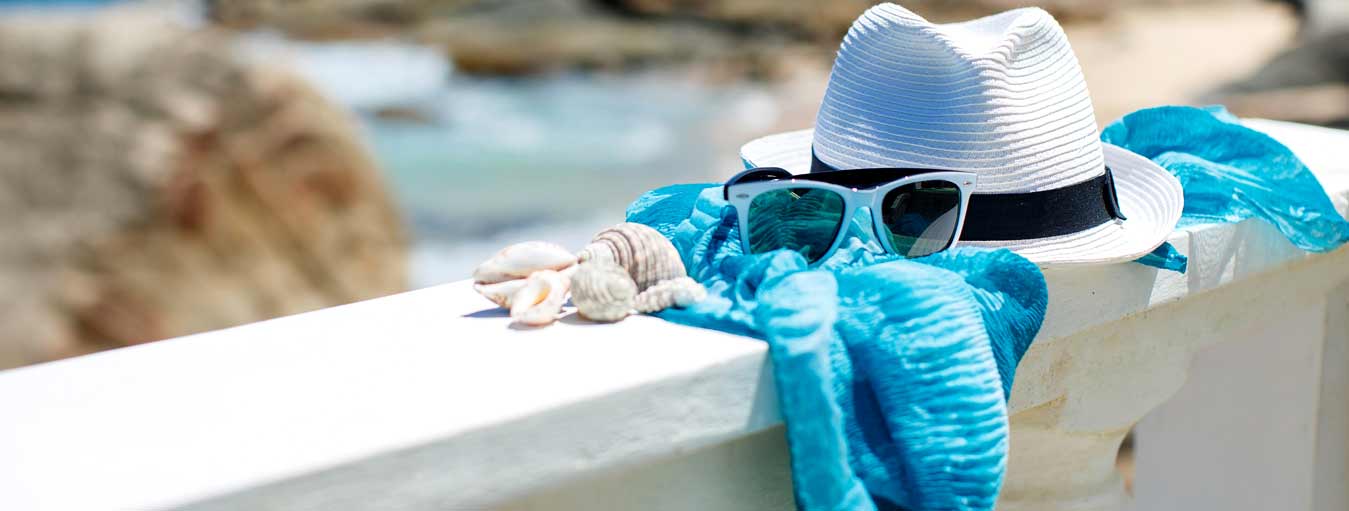Blog
-

Starkey Innovations Expo, An Extravaganza Which Cumulatively Predicts An Amazing Future!
 8 Feb , 2016
8 Feb , 2016
A reported 3,200 practice owners and industry guests (3,600 people when counting Starkey staff) attended the third biennial Starkey Hearing Innovations Expo held at the Cosmopolitan hotel and convention center in Las Vegas.
The Starkey Expo has quickly become one of the world’s largest gatherings of dispensing professionals—primarily decision makers and business owners—from the United States and Canada, as well as 42 other countries.
This year’s all-star lineup of presenters included numerous bestselling authors, two former US presidents, actor Ben Affleck, the stars of the popular TV show Shark Tank, and basketball Hall-of-Famer Magic Johnson. Throw in 24 industry speakers, 50+ Starkey presenters, Sammy Hagar and the Beach Boys for musical entertainment, as well as breakout sessions hosted by some of the field’s best researchers, business leaders, and marketing experts, and the 3-day event moved along at a dizzying pace, offering something for everyone.
In introducing the Expo, Starkey Senior Vice President of Sales and Marketing Brandon Sawalich said that, with all the recent changes in technology, healthcare, and the aging Baby Boomer population, there has never been a greater opportunity for hearing healthcare professionals. He outlined the three overarching themes for each day of the event: 1) Technology; 2) Marketing; and 3) Purpose. Sawalich also described the Solutions Hall which offered products and services from partnering companies, the Innovations Center which showed how R&D plays an integral role in the development of hearing aid components and related products, and the Social Media Impact Lounge. Additionally a Genius Bar previewed Starkey’s upcoming Synergy product line that is scheduled for a March 1 launch. The overall theme of the conference was Hear Better, Live Better.
Technology, the Starkey/Bragi partnership, Synergy, and the sharks from Shark Tank.
To kick off Thursday’s focus on innovative technologies, Forbes columnist and book author Mike Maddock provided examples of the people and personality types who are able to “free the idea monkey” and move the world rapidly forward with innovation and change. He explained that invention is simply coming up with an idea, while innovation is solving a real need. Maddock believes that too many companies invent but don’t innovate, and the best businesses depend on the ying-yang personalities of people who are highly inventive and others who are more pragmatic.
Starkey Chief Technology Officer Tim Trine then announced the company’s newly formed partnership with Bragi, asserting that Bragi is the developer of the world’s first true hearable device capable of performing as an electronic assistant with up to 27 possible sensing parameters.
As an example of one possible future application, a video produced by Starkey portrayed a scenario in which an older Baby Boomer is having a wireless conversation with his daughter while carrying a basket of laundry in his home. Upon walking up a flight of stairs, he grows faint and slumps to the floor, at which time his hearable device senses his heart rate and postural change, asks him if he needs help, and upon his affirmative voice reply, calls 911 then sends an instant message to his caregiver (daughter) who quickly calls him. All of this takes place automatically within minutes, requiring no external device other than the ear-worn hearable.
Bragi Founder and CEO Nikolaj Hvvid, a native of Denmark, then outlined his company’s product, the Dash hearable device that “entertains you, enables you, and protects you.” Hvvid explained that his kickstarter campaign focused on the development of a multi-functional product for athletes, but its ultimate goal goes far beyond this concept, delving into the social, health, cultural, and even financial realms—and he says the device was deeply inspired by his sister’s challenges battling muscular sclerosis. Hvvid believes the future of communication in our lifetime will entail “passive and transparent” (discreet) devices that connect the human mind with cloud-based computing and knowledge, with the purpose “to enable, protect, and take people on the road” to better futures. His company is working with Starkey to develop a custom version of the Dash, and the current device was featured in the Expo’s Demonstration Hall.
Simon Carlile, PhD, Starkey’s senior director of research and a professor of neuroscience, outlined how the Internet of Things, Cloud computing, Moore’s Law of exponential processing, and even electroencephalography (EEG) and the cracking of the neural code for speech are leading to new—and what some might view as wild—ideas for reshaping the future. Similarly, Starkey Manager of Mechanical Engineering Brian Dobson showed how 3D printing is changing the world of manufacturing and product development. He says there is an almost-exponential growth in patents related to 3D printing, and this product area is now poised to be a $23 billion industry by 2020.
Tim Trine provided a sneak-peek of the company’s upcoming product launch, Synergy® with Acuity OS, Muse, and Surf2 systems. The new products are scheduled to launch on March 1. Trine also shared some work Starkey is doing in rechargeable hearing aids, as well as his impressions of the 2016 Consumer Electronics Show, which was held in Las Vegas the week prior to the Expo. He believes that sensors that detect everything from body temperature to global positioning will be employed in myriad electronic devices, and a new class of “invisibles” will ultimately emerge to connect consumers to vast networks of information and communication products.
Starkey VP of Audiology and Professional Relations David Fabry moderated a Q&A session featuring four of the stars from the hit-series Shark Tank: Kevin O’Leary, Barbara Corcoran, Damon John, and Mark Cuban. As members of a TV show that features millionaire-entrepreneurs who evaluate new ideas as investment opportunities, the Shark Tank panel offered behind-the-scenes insights into the show, light-hearted snipes at each other, as well as their philosophies for identifying innovative, promising businesses and capable business leaders.
Thursday night’s keynote address was provided by engineer and physician Peter Diamandis, who authored of the bestselling book, Abundance: The Future is Better Than You Think, and created of the XPrize Foundation. Diamandis believes that increasing prosperity, new tools, connectivity, and what he characterizes as the “audacity” of inventors and entrepreneurs will transform the world in unexpected ways; he said technologies, including new information networks, sensors, robotics, 3D printing, synthetic biology, virtual reality, artificial intelligence (AI), and more, will profoundly change the future.
Randi Zuckerburg of Zuckerburg Media, and sister of Facebook Founder Mark Zuckerburg, on Friday presented a lively account of her involvement in social media, as well as future trends. She believes that marketers should pay special attention to YouTube, Facebook, LinkedIn, Instagram, and Twitter when promoting their messages to the public. She also made the case that the “new workplace”—large and small— is increasingly creative, mobile, and needs to communicate like a media company, disseminating information in many different channels.
An interesting statement was made, portending the future, by David Fabry.
Hearing aids have not yet captured the imagination of Baby Boomers, said David Fabry, but this generation is definitely interested in the stylish wearables. Citing products like FitBit and the Bragi Dash, Fabry contends that the ear, will become the “new wrist” for conveying on-demand, personalized information that monitors physical activity, health, and communications.
Fabry outlined components of the Starkey Hearing Foundations’ Community-based Healthcare Program Mode, which is designed to provide sustainable hearing care by 1) Identifying groups of people in need of hearing healthcare; 2) Developing and undertaking missions to provide the appropriate care, then 3) Establishing aftercare programs for the monitoring and maintenance of care in a sustainable manner. “Our ultimate goal,” says Fabry, “is to make [the Foundation’s services] obsolete.”
Bill Austin, founder of Starkey and the Starkey Hearing Foundation, looked back on his career and journey in hearing healthcare. Throughout his younger years, he says he was inspired by the story of Albert Schweitzer, as well as the lives and actions of his grandfather and great grandfather who frequently went out of their way to help complete strangers who were experiencing hard times. Austin said “So how important are you? It’s not about the money; it’s about caring. We can make it a good day because it’s our choice to contribute positively or negatively…The future isn’t about the hearing aid business. We’re in the business of helping people to overcome barriers so they can help each other move forward.” According to Austin, the hearing healthcare field is now on the cusp of dramatic technological change.
Friday night’s keynote was given by the 42nd US President, Bill Clinton, who talked about the so-called “Butterfly Effect,” a term that refers to how seemingly small actions can create large, lasting, unexpected effects on the future. In particular, he spoke about the commitments and work being done by both the Starkey Hearing Foundation and the Clinton Global Initiative.
Saturday night’s general session featured the 43rd US President, George W. Bush, who talked candidly about his eight years as president, leadership, as well as his relatively quiet life now—including his new-found love of painting.
Breakout Sessions.
Additionally, each day of the Expo featured close to a dozen concurrent breakout sessions that focused on that day’s topic. For example, on Thursday, one could choose from an impressive list of seminars about hearing science and emerging technologies, including a session by Nina Kraus, PhD, of Northwestern University’s Kraus Lab, who spoke about how the brain responds to auditory information and music, and a seminar by Anu Sharma, PhD, from the University of Colorado at Boulder who detailed her team’s findings about brain reorganization in response to hearing loss (including mild hearing loss). On Friday, sessions on the topic of marketing.
In summarizing this entire event, most participants responded with a sense that the future, is “now”.
The Starkey Hearing Innovations Expo is a biennial event that has been held since 2012.SOURCE: StarkeyIMAGE CREDIT: Starkey (Former President Bill Clinton speaking about his work with the Starkey Hearing Foundation and the Clinton Global Initiative).





























































































































































































































































































































































































































































































































































































